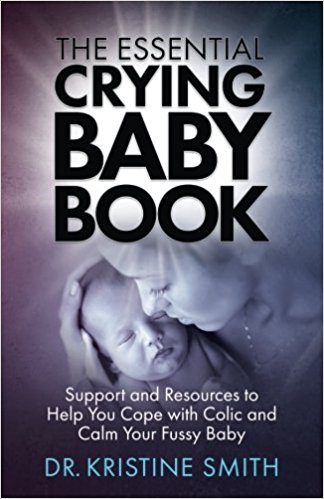How to stop a crying baby? Now, isn’t that a million dollar question. Ask that to new parents and 9 out of ten will throw up their hands in despair. The question will remind many of sleepless nights and pure anguish. While you can find out accurate answers to most things reasonably easily with Google, answer to this one is not easy. When her first newborn began crying uncontrollably day after day, Kristine was astonished to find minimal resources on the topic – let alone support. The Essential Crying Baby Book is the result of years of the author’s research of the medical literature since.
Dr. Kristine Smith is a veterinary doctor, a certified Health and Wellness Coach, research scientist, speaker and author. Kristine partnered with and led workshops for United Nations agencies such as the World Health Organization, Food and Agriculture Organization, and the World Bank, as well as US agencies such as the Centers for Disease Control and Prevention.
The Essential Crying Baby Book: Support and Resources to Help You Cope with Colic and Calm Your Fussy Baby

Author: Dr. Kristine Smith
Paperback: 164 pages
Publisher: Lowell House Press; 1 edition (July 27, 2017)
ISBN: 0999162500, 978-0999162507
The Essential Crying Baby Book Summary
When you are a first time parent, the arrival of your long-awaited newborn is supposed to be one of the most exciting times in your life. But what happens when your new baby just won’t stop crying?
The Essential Crying Baby Book not only does it cover causes and treatments of excessive crying, but it dives deep into the emotional turmoil and angst parents of these constant criers face – and the impact it can have on the parent’s mental health and mother-child bond even years later.
Excessive crying is the number one reason for visits to the pediatrician in baby’s first year. Normal babies cry often, especially if hungry or tired, or have a wet diaper. But 10-20 % of babies will cry excessively, what some refer to as “colic”, typically defined as intense, unexplained, inconsolable crying lasting more than three hours a day for more than three days a week for more than three weeks.
Dr. Smith honestly admits having felt useless and helpless as a mother of an inconsolable, screaming infant, and wanting to just walk away after enduring months of crying. She explains how excessive crying can contribute to anxiety and post-partum depression in the mother due to stress and feelings of helplessness. Further, new mothers lose their confidence to parent – believing that they are at fault for not being able to soothe their baby. These moms never get the chance to learn how to effectively interact and bond with their baby, which harms the mother-child relationship even after the crying phase has ended, potentially lasting into the toddler years.
Her emphasis is in the book is not only on the health of the babies. She emphasizes to the medical community and society at large that these parents need our support, not our judgements or misplaced parenting advice. Moms and dads of these babies need to take extra care of themselves, allowing themselves time away from their baby to unwind and recharge, and means to do so are provided.
Strategies in this book are proven to help parents avoid these negative consequences of excessive crying. Community support has been shown to decrease the chance of these mothers becoming depressed. Smith encourages mothers and fathers to speak their truths and reach out for help, without feeling ashamed.
The Essential Crying Baby Book Review
Saying you are fed-up with the baby will make you a pariah in minutes. While you may joke about it, an incessantly crying baby can take a toll on you and your relationship. The author settles this with an honest dialogue in the early pages of the book. As they say, accepting the truth is the first step toward finding a solution.
The author eases slowly into the problem with her story with a narrative non-fiction style, which helps the reader flip through the pages and gain an insight into the problem at the same time. The discussion sometimes gets a bit academic and may not be interesting to readers who are looking for a quick fix solution.
But the author soon returns to the problem at hand and discusses the merits of different pacifying methods and how to do it right. The bigger casualty of having a colic baby can be the stressful bond between the mother and the baby. The author addresses this problem in the later chapters as she discusses ways to recover from the stressful times.